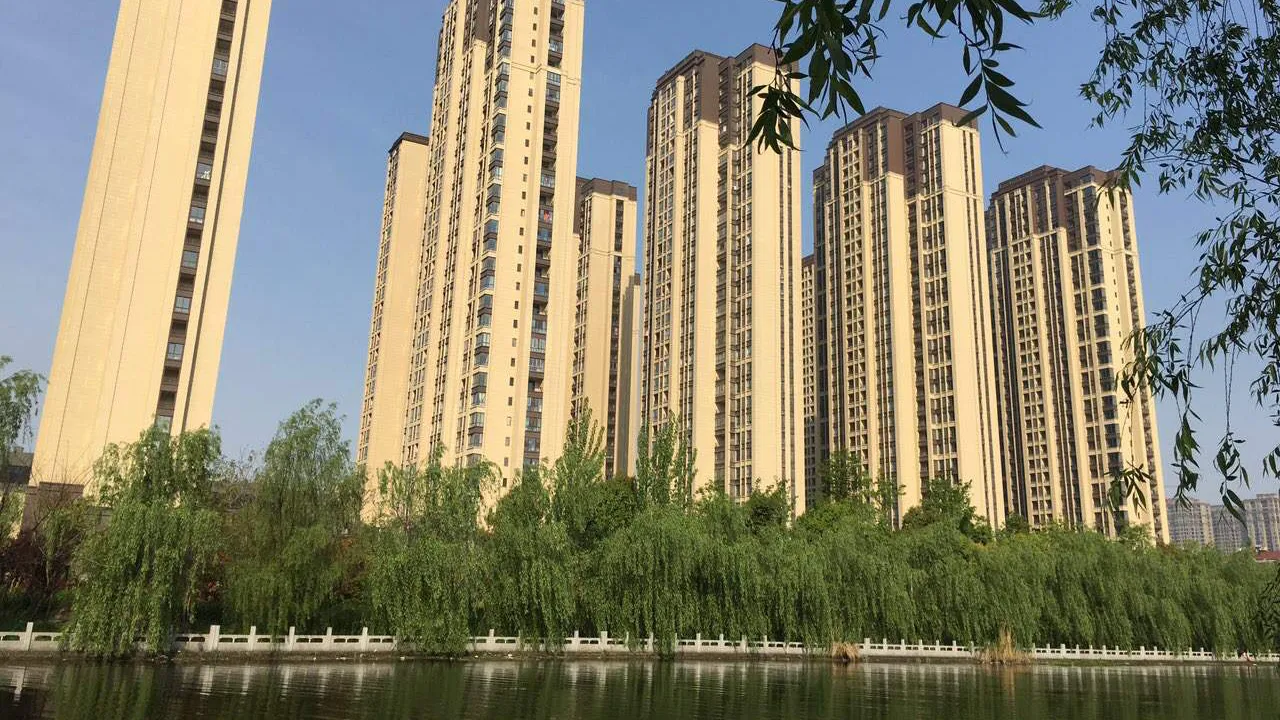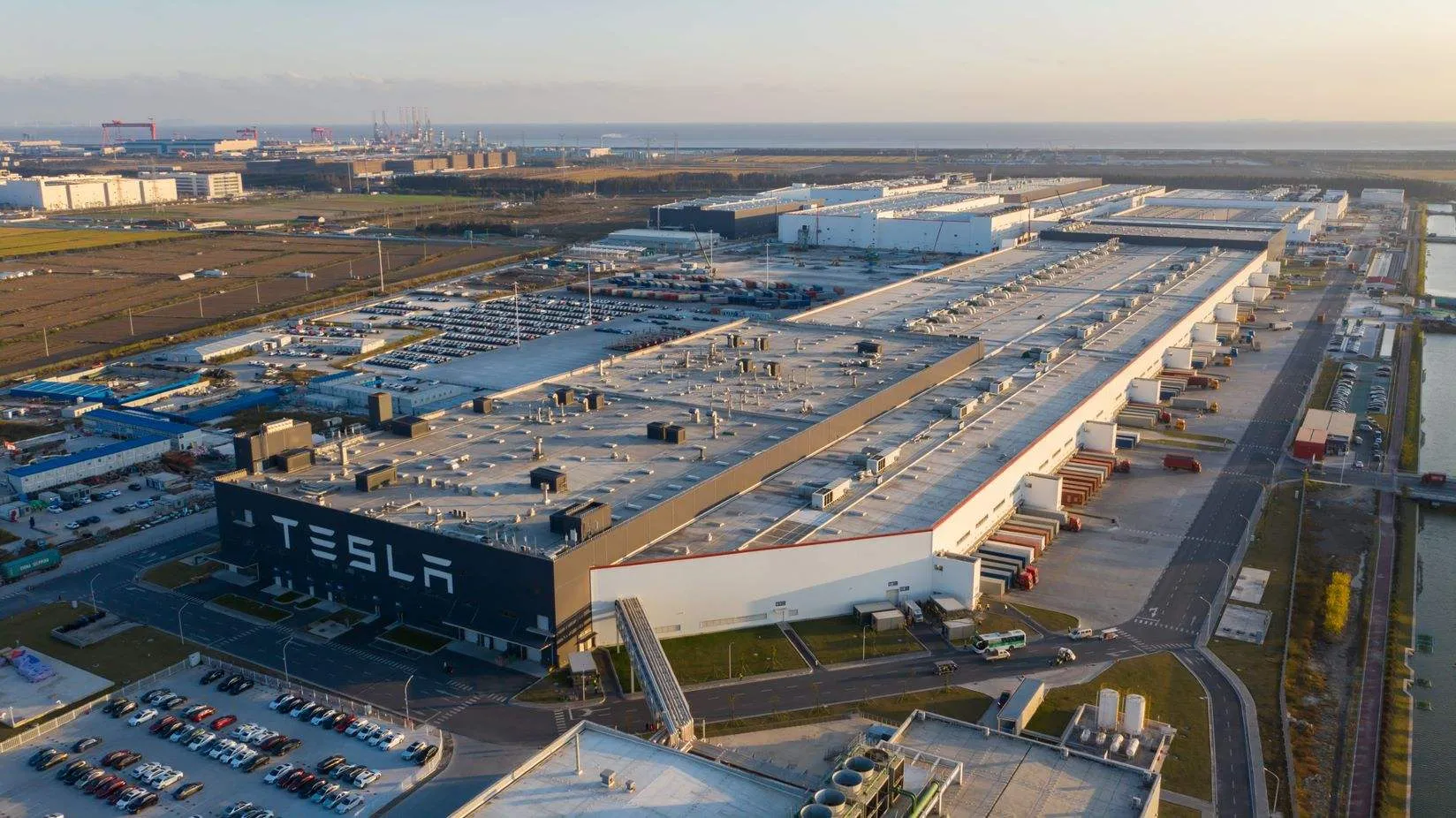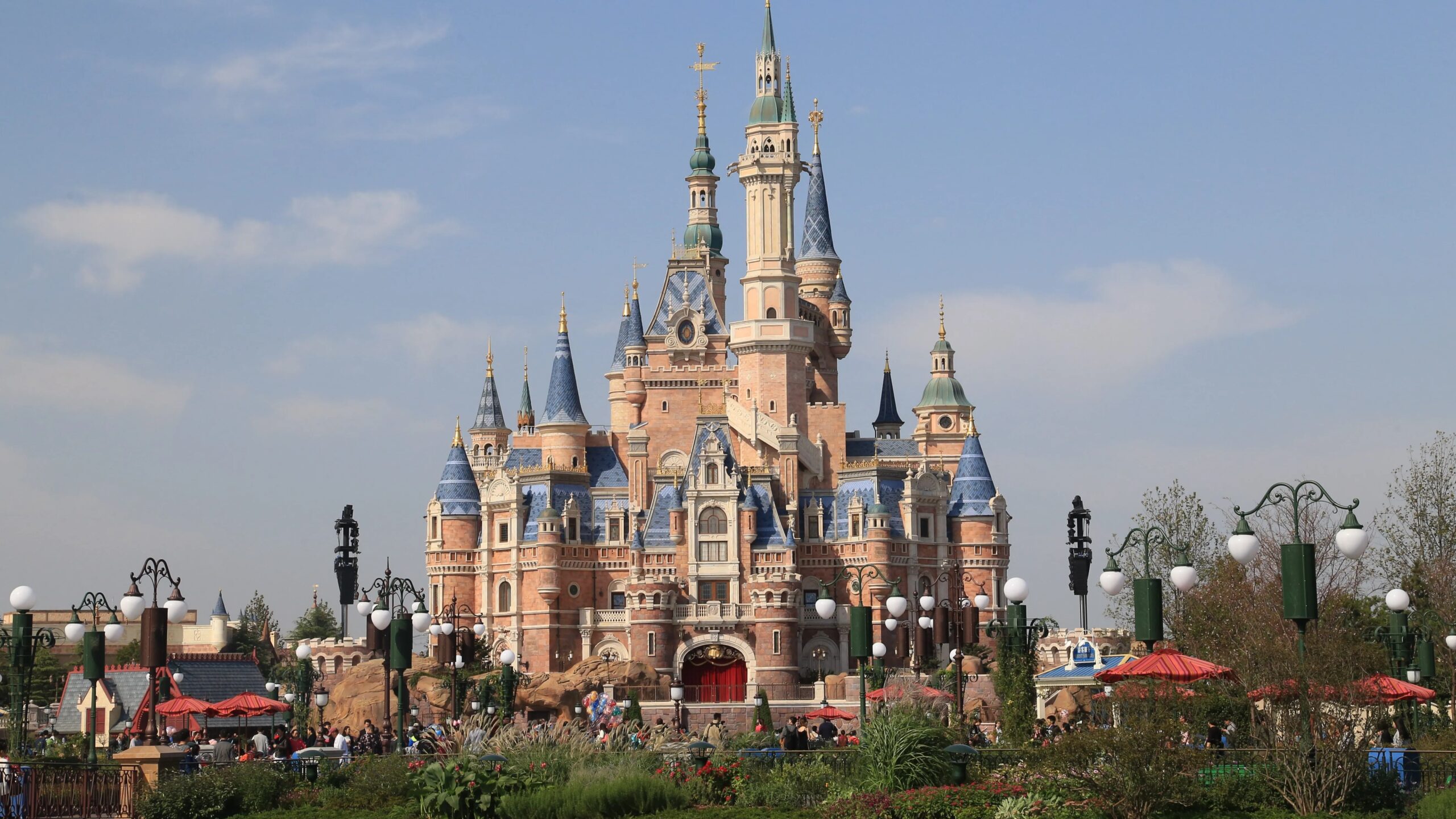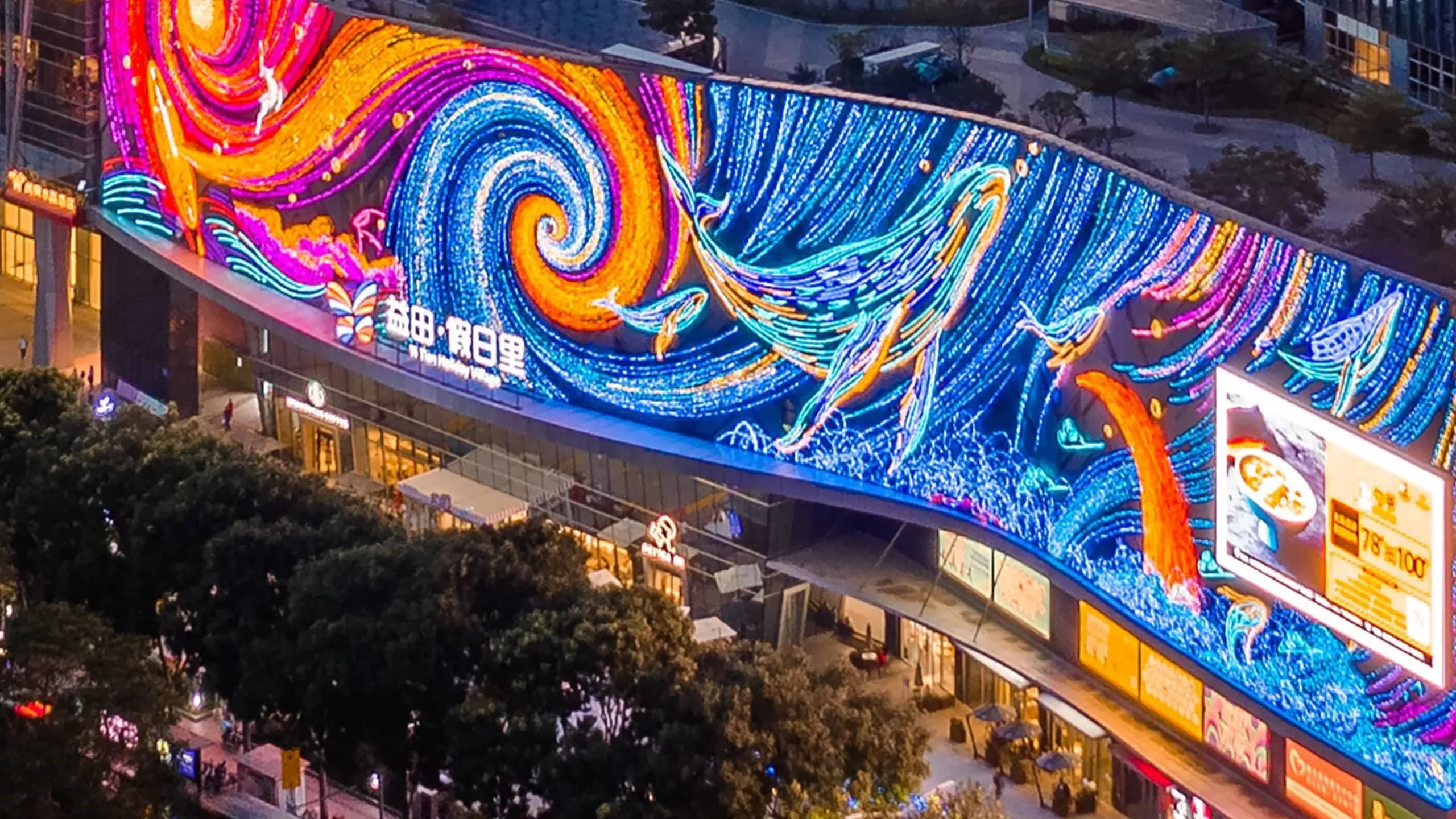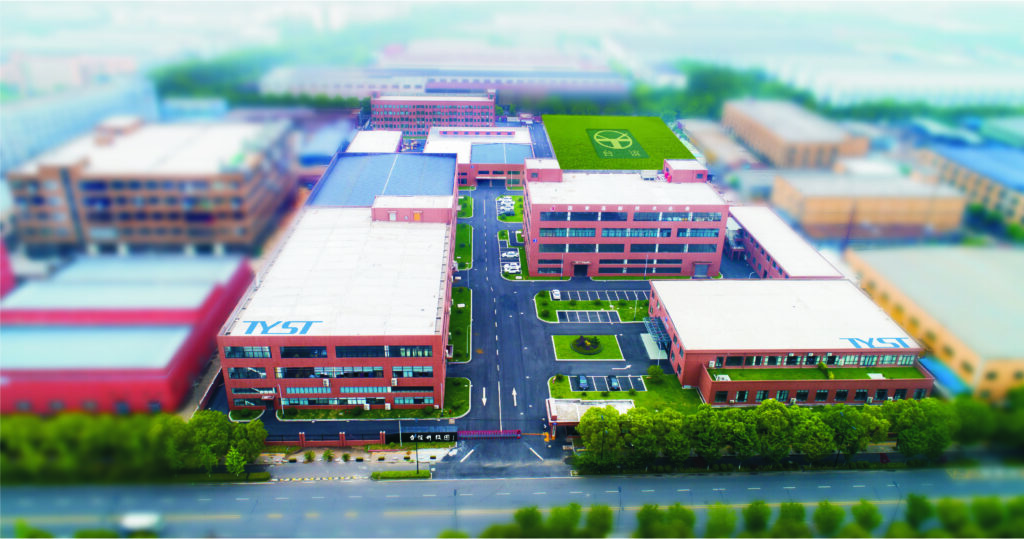
Fire alarm systems are very important for keeping people and buildings safe in smart cities. In the last ten years, more advanced fire alarm equipment has been used. This is because rules are stricter and there are more smart buildings.
-
Wireless and IoT-enabled fire alarm systems can now watch things in real time. They can also help fix problems before they get worse.
-
Insurance companies give rewards for using new fire alarm equipment. New building rules also make people put in better fire alarms in cities.
These changes show that fire safety is very important. City planners and safety workers need to use systems that work together.
Key Takeaways
-
Fire alarm systems help keep people and buildings safe. They give early warnings to stop fires from spreading. This helps lower the chance of people getting hurt.
-
Modern fire alarms use IoT, wireless tech, and AI. These connect with other city systems. This helps emergency teams act faster and smarter.
-
The fire alarm market is growing because of stricter rules. More buildings in cities also increase the need for alarms. New technology makes alarms safer and cuts down on false alarms.
-
New ideas like multi-sensor detection and cloud computing help fire alarms work better. They are easier to put in and help guide people in emergencies.
-
Picking the right fire alarm system is important for safety. Linking it with building management helps even more. Following rules and planning helps cities solve problems.
Role of Fire Alarm Systems

Urban Safety Enhancement
Fire alarm systems help keep people and buildings safe in cities. These systems have changed a lot over time. They now use IoT technology and connect to building management tools. This helps city planners and safety workers protect city areas.
Fire alarm systems warn people early about fires. This helps lower the number of fires and injuries. For example, heat detectors in some places warn both people nearby and their neighbors. Early warnings let people act fast and stop fires from spreading. Studies show these systems stopped fire spread in over 94% of cases. This shows how important fire detection is for city safety.
Tyee has many fire safety products, like the TY2001 Automatic Fire Alarm System and emergency lights. These products use more than one sensor and smart computer programs to give good alerts. Tyee’s products help keep businesses, factories, and homes safe. Their systems help cities have better fire safety and stay strong during emergencies.
Note: Modern fire alarm systems do more than just find fires. They also give real-time information and help fix problems before they get worse. This makes them very important for smart cities.
Integration with Smart Infrastructure
Connecting systems is key for smart cities. Fire alarm systems now link with other building and city systems. This creates a strong safety network. IoT fire alarms use many sensors, like smoke, heat, and gas detectors. Some even use cameras. These tools work together to spot fires early and give good warnings.
In smart buildings, fire alarms connect to doors and security cameras. When there is a fire, the system can open emergency exits and watch people leave through cameras. This helps security teams see where people go and tell first responders what is happening. Watching and studying data all the time helps stop false alarms and covers big areas.
Tyee’s products work well in these smart systems. Their tools help manage everything from one place and guide people out safely. For example, Tyee’s emergency lights use real-time fire data to show safe ways out. This kind of teamwork helps smart cities and makes sure fire safety works with other city systems.
Emergency Response Support
Fire alarm systems help emergency teams by giving them real-time updates. IoT sensors tell where the fire is, how strong it is, and if there are dangers. This helps fire, police, and medical teams get ready and work together.
Emergency vehicles, like fire trucks and ambulances, talk to each other to get there faster. Smart city sensors send data to traffic systems to clear the way for them. Dashboards collect data from buildings and the environment. This gives leaders a clear idea of what is happening before they arrive.
Tyee’s fire safety systems help emergency teams talk and share data. Their systems let different groups work together easily. Real-time updates help teams make good choices and use their resources well. This leads to better results and keeps everyone safer in the city.
Tip: Integrated fire alarm systems are very important for emergency management in smart cities. They help teams respond faster and do a better job.
Fire Alarm and Detection Market
Market Growth Drivers
The fire alarm and detection market is growing fast. Many things help this growth.
-
Stricter fire safety rules, like NFPA 72 in the United States, need better systems.
-
More cities and factories mean more buildings need protection.
-
More people live in cities now, and new buildings need smart fire alarm market solutions.
-
New technology, like IoT and AI, helps find fires faster and stops false alarms.
-
People want safer homes and businesses, so the global fire alarm equipment market gets bigger.
Note: The United Nations says 2.5 billion more people will live in cities by 2050. This means more people will need fire alarm and detection market solutions.
Regional Insights
Different places shape the fire alarm and detection market.
-
North America is first because of strong rules, good knowledge, and new technology.
-
Asia-Pacific grows the fastest because more people move to cities and build factories, especially in China and India.
-
Europe, South America, and the Middle East & Africa have different levels of use because of their economies and rules.
-
Some places have problems like high prices or not enough knowledge, which makes it hard for the market to grow.
The table below shows the market size and how much it may grow:
|
Metric |
Value (USD Billion) |
Period |
CAGR (%) |
|---|---|---|---|
|
Market Size (2024) |
2024 |
N/A |
|
|
Projected Market Size (2032) |
98.55 |
2032 |
8.0 |
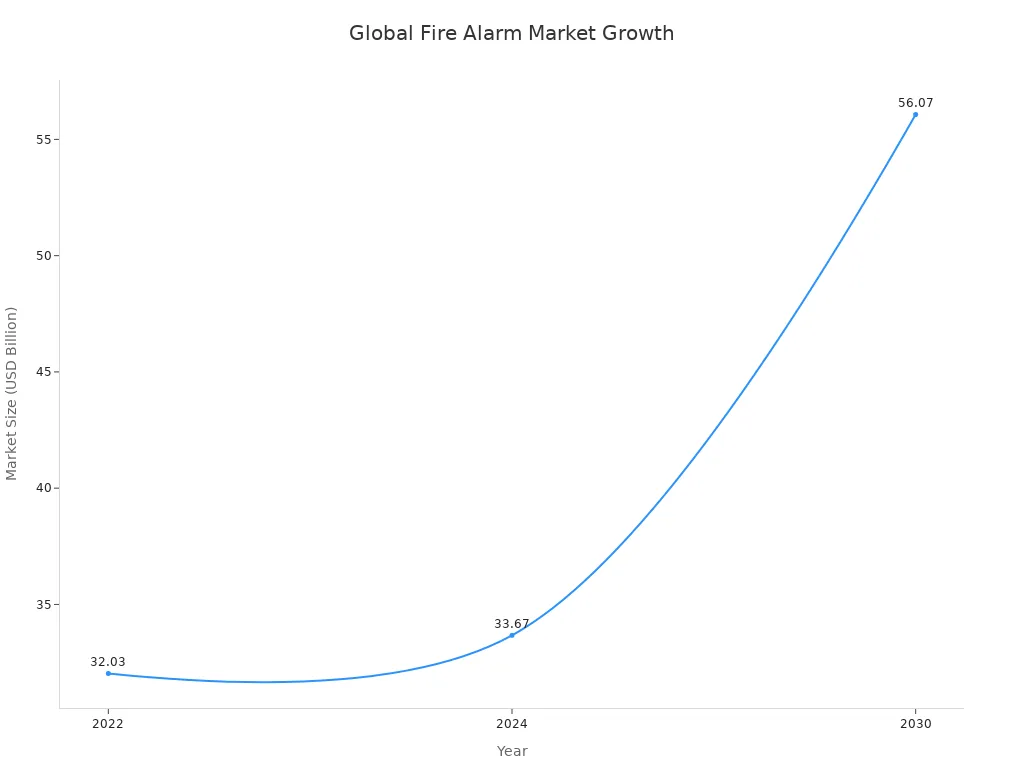
Key Players and tyee’s Position
Many companies try to win in the smart fire alarm market. Tyee is special because it is creative and makes good products. The company has important certificates in places like Thailand, so it can sell in new areas. Tyee changes its products to fit local rules and works with others to solve problems. It is strong in the ASEAN region and is getting known in Africa, showing it leads the fire alarm and detection market.
Tyee worked on a project in Africa with Weihai International. This shows Tyee can give good solutions even in hard places. The project made things safer and helped more people know about Tyee. Tyee wants to grow in the global fire alarm equipment market and always works hard to make good products. This makes Tyee a trusted choice for smart cities all over the world.
Trends and Forecast
The smart fire alarm market is changing fast. New trends help cities keep people and buildings safe. This part talks about the main trends and what experts think will happen next.
IoT and Wireless Technology
IoT and wireless technology are very important now. IoT links many sensors all over a city. These sensors look for smoke, heat, and gas. They send alerts right away if they find danger. Wireless fire alarm equipment is easy to put in hard places. This helps in tall buildings, old sites, and busy areas.
Wireless systems use strong networks like LoRaWAN. These networks let devices talk far and through thick walls. Workers do not need to drill or change walls. This saves time and money for everyone. Wireless fire alarm systems work in new and old buildings. They give loud and bright alerts, even in noisy places.
IoT sensors help first responders with real-time data. Smart traffic systems use this data to clear roads for fire trucks. Some systems use drones to show live video of fires. Tyee’s smart fire alarm systems use these new technologies to keep cities safe. Their solutions work with other smart city tools for better teamwork and faster help.
Tip: Wireless and IoT fire alarm equipment helps cities grow safely and handle new dangers.
AI and Predictive Analytics
AI and predictive analytics are big trends today. AI looks at data from many sensors. It finds patterns that show a fire might start. This helps stop fires before they get worse. Predictive analytics uses old data, weather, and building facts to find risky spots.
AI-powered systems send alerts faster than old ones. They can also lower false alarms by checking many signals at once. Some systems use cameras and computer vision to spot smoke or flames. AI helps firefighters by watching their health and safety during emergencies.
Tyee’s fire alarm systems use AI to make detection and response better. Their products learn from each event and get smarter over time. This trend will keep growing as cities want safer and smarter fire alarm equipment.
Cloud and Edge Computing
Cloud and edge computing change how cities use fire alarm systems. Edge devices, like smart cameras, check for fires right where they are. They send alerts in just seconds. The cloud stores data, runs reports, and lets people watch systems from anywhere.
Cloud-based monitoring helps managers see problems early. They can fix issues before they get big. Edge computing lowers delays, so alerts reach emergency teams faster. Tyee’s solutions use both cloud and edge computing for strong, real-time safety.
Many cities now use cloud-based monitoring for all their fire alarm systems. This trend will grow as more cities want fast and easy safety tools.
Sustainability in Fire Alarm Equipment
Sustainability is a big trend in fire alarm equipment. New fire alarm equipment uses less energy and lasts longer. Many systems now have batteries that last for years. Modular designs let workers add or move devices without waste.
Manufacturers use eco-friendly materials and better packaging. This lowers the carbon footprint of each product. Some systems use safe fire suppression agents that do not hurt the environment. Tyee’s emergency lighting and fire alarm equipment support these green goals. Their products help cities follow safety rules and protect the planet.
Note: Picking green fire alarm equipment helps cities save money and follow new environmental laws.
Growth Forecast for the Smart Fire Alarm Market
Experts think the smart fire alarm market will keep growing. Cities will need better fire detection as buildings get taller and more complex. The forecast shows strong demand for smart fire alarm systems with IoT, AI, and cloud-based monitoring. Working with other city systems will become normal. Companies like Tyee lead this change by offering good and new solutions.
These trends and forecasts show a future where smart fire alarm systems make cities safer, greener, and more connected.
Fire Alarm Equipment Innovations
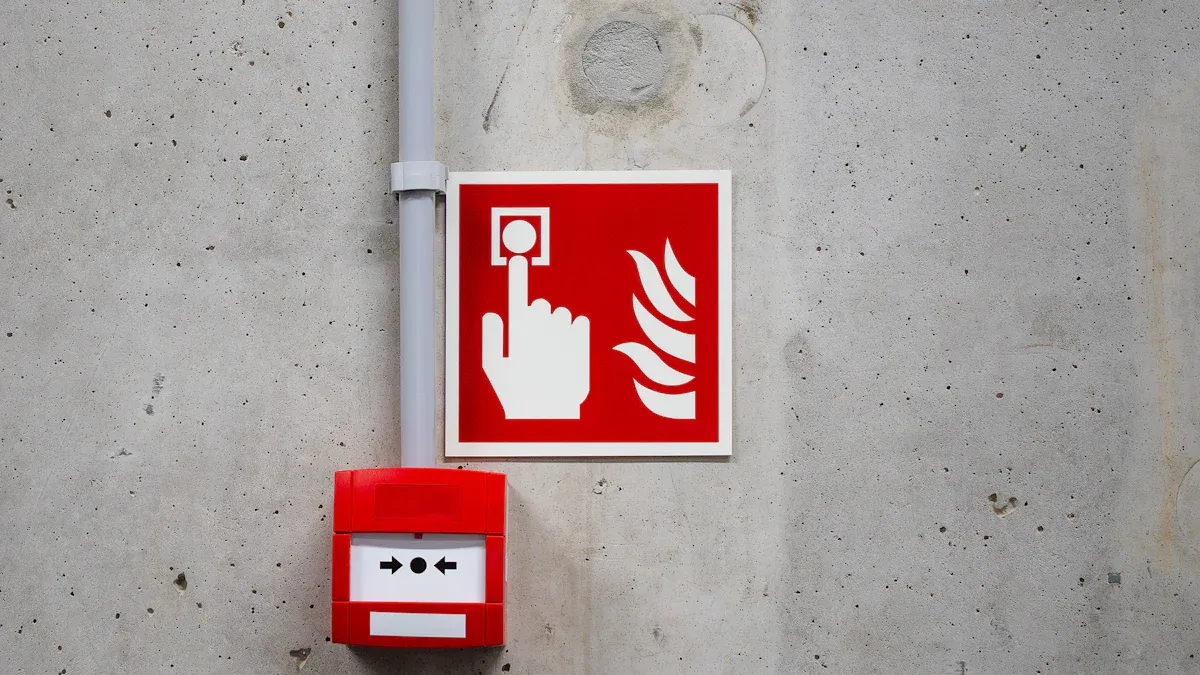
Multi-Sensor Detection
Modern fire alarm equipment uses more than one sensor. These devices have smoke, heat, and carbon monoxide sensors together. This helps find fires better and stops false alarms. Some systems use artificial intelligence to learn about their surroundings. They can change how sensitive they are. These smart features help find both fast and slow fires.
|
Innovation Aspect |
Description |
Benefits |
|---|---|---|
|
Multi-sensor integration |
Puts smoke, heat, and CO sensors in one device |
Finds fires better, fewer false alarms |
|
AI and Machine Learning |
Uses smart programs to change how it works |
More reliable, gives early warnings |
|
Wireless Technology |
Uses radio signals for easy setup |
Simple to install, can add more, saves money |
|
IoT Connectivity |
Lets people watch and get alerts from far away |
Safer, easier to fix problems |
|
Smart Fire Detection |
Looks at data from many sensors to make good choices |
Faster help, keeps people safer |
Tyee’s TY2001 Automatic Fire Alarm System uses these new ideas. It gives good alerts and works in many places. This makes it great for smart buildings.
Addressable vs. Non-Addressable Systems
Picking the right fire alarm depends on the building. Addressable systems give each device its own code. This helps find where the alarm is coming from. These systems are good for big or tricky buildings like hospitals or offices. They are easy to add to and can be watched from far away.
|
Feature/Aspect |
Conventional Systems |
|
|---|---|---|
|
Device Identification |
Each device has its own code |
Devices are grouped in zones |
|
Response Time |
Finds the spot fast and exactly |
Slower and not as exact |
|
Scalability |
Easy to add more devices |
Harder to add more |
|
Maintenance |
Checks itself, less time broken |
Needs people to check, more breaks |
|
Installation Cost |
Costs more at first, saves money later |
Cheaper at first, costs more later |
|
Suitability |
Good for big or tricky buildings |
Good for small or simple buildings |
Tyee has both types of fire alarm equipment. Their products work for many smart buildings and keep everyone safe.
Integration with Building Management
Connecting fire alarms to building systems is important in smart cities. When fire alarms link with building management, people can control everything from one place. The system can turn on emergency lights, open doors, and tell staff what to do. This makes things safer and helps people act fast in emergencies.
Smart buildings do better when fire alarms work with other systems. Managers can see and control everything on one screen. This setup means less time when things are broken and faster help in emergencies. Tyee’s Emergency Lighting and Evacuation Indication System works well with building management. It helps people leave safely and quickly.
Note: Linking fire alarms with building systems makes cities stronger and helps stop fires before they get worse.
Challenges and Opportunities
Implementation Barriers
Cities have many problems when adding new fire alarm systems. Some cities do not have a good plan to stop fire injuries. This makes it hard to keep people safe, especially those at risk. Some buildings use weak materials or have bad designs. These things make fires worse. Sometimes, workers do not put in or fix alarms the right way. Small roads, busy traffic, and no emergency lanes slow down help. Rescue teams may not have the best tools or enough training. Crowded places and poor planning make it hard for fire trucks to get to fires. People blocking rescue work can also cause trouble.
Tyee helps by giving systems that are easy to set up. They give strong support and work in many types of buildings. Their solutions help cities get better fire safety fast.
Regulatory Compliance
Fire safety rules decide how companies put in and care for fire alarm systems. Rules like NFPA, IFC, and IBC say many buildings must have watched fire alarms. Local leaders make rules for checking and testing alarms. These rules can be different in each city. Some rules say fire alarms must connect to other systems, like sprinklers or HVAC. Regular checks and fixing keep alarms working well and help cities follow the law.
Tyee makes products that meet tough fire safety rules. Their systems pass many tests and get certificates. This makes Tyee a trusted pick for smart cities.
Opportunities for Innovation
Smart cities give new chances for fire alarm companies. AI, IoT, and cloud computing help make smart fire alarm systems. Real-time data and smart tools help cities act fast in fires. Alerts by voice and text reach more people in emergencies. Many places, like Asia-Pacific and Latin America, want smart and easy-to-grow systems.
Tyee leads with products that work with smart city systems. Their new ideas help cities grow safely and meet the need for better fire safety.
Real-World Adoption
Case Studies
Real projects show how fire alarm systems help smart cities. The table below gives some good examples:
|
Case Study |
Location & Setting |
Fire System Used |
Key Outcome |
Lesson Learned |
|---|---|---|---|---|
|
Tech Titan’s Data Center |
Silicon Valley, Data Center |
Inert gas suppression with advanced sensors |
Disaster stopped, equipment stayed safe |
Must work well with the environment |
|
Restaurant Resilience |
City-center restaurant |
Wet chemical suppression, heat/flame detection |
Kitchen fire stopped fast, people stayed safe |
Custom solutions save lives |
|
Industrial Marvel’s Quick Recovery |
Manufacturing complex |
Automatic sprinkler system |
Fire controlled, business started again quickly |
Maintenance is very important |
|
Retail Resilience in Urban Settings |
Urban retail flagship store |
Water mist and gas-based agents |
Less damage, neighbors protected |
Think about the whole community |
Tyee’s systems are used in big projects like Hangzhou Metro Line 3 and Gwadar Airport. People say these systems work well, give fast alerts, and are easy to use.
Lessons Learned
-
Being ready for emergencies and having good plans saves lives.
-
Talking clearly during fires helps everyone stay calm.
-
Strong safety rules keep workers and people safe.
-
Checking systems often and following rules makes buildings safer.
-
Updating systems helps stop new dangers.
Big campuses learned that only watching some alarms or not linking them slowed help. Good, connected fire alarm systems with clear info help teams act fast and keep people safe.
Future Outlook
-
Many governments now want advanced fire alarm systems in all buildings.
-
Smart city plans use AI alarms that find fires and act right away.
-
IoT, AI, and machine learning make alarms smarter and cut down on false alerts.
-
Wireless and cloud systems are easy to set up and manage from far away.
-
Insurance rewards and government money help more people use these systems.
-
New ideas and support make fire alarms cheaper and easier for everyone.
City planners and safety workers should use new tech, keep systems working, and talk clearly to keep cities safe.
Smart cities use new fire safety tools to keep people safe. These tools use IoT and AI to work better and grow with the city. Some sensors make their own power, so they work even if the lights go out. Data tools help cities act fast in emergencies. Tyee is a leader with good products and lots of knowledge. If you want to learn more, check out these resources:
-
Honeywell Industrial Fire Solutions: advanced detection, training, and support
-
FireAlarm.com: product catalogs, blogs, and professional services
-
Autocall: digital tools, podcasts, and commercial solutions
-
Everon Solutions: early warning systems and nationwide support
FAQ
What makes a fire alarm system suitable for smart cities?
A good fire alarm system for smart cities uses IoT and wireless technology. It can watch for fires all the time. These features help find fires fast and help emergency teams act quickly. Tyee’s systems can work easily with other smart city tools.
How do multi-sensor fire alarms reduce false alarms?
Multi-sensor fire alarms use smoke, heat, and gas sensors together. They use smart programs to check many signals at once. This helps the system know if there is a real fire or not. It means there are fewer false alarms.
Can fire alarm systems connect with building management platforms?
Yes. Today’s fire alarm systems, like tyee’s, can link with building management platforms. This lets people control everything from one place. They get alerts right away and can unlock doors or turn on emergency lights automatically.
What certifications should a reliable fire alarm system have?
A reliable fire alarm system should have UL, CE, and ISO9001 certifications. These show the system is safe and high quality. Tyee’s products have many certifications so they can be used around the world.
How does emergency lighting help during a fire?
Emergency lighting helps people find their way out when normal lights go out. Tyee’s emergency lights use fire data to show the safest way to leave. This helps people stay calm and get out quickly and safely.


